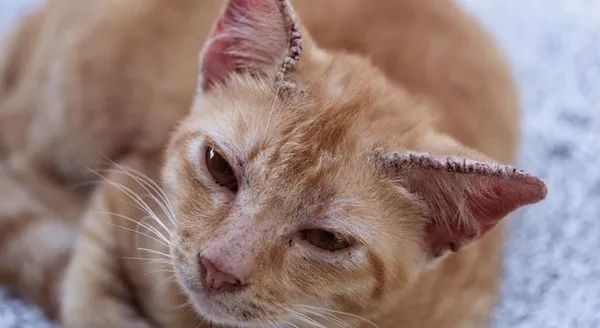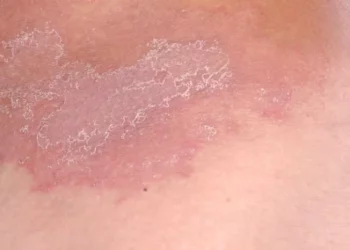Ringworm, despite its misleading name, is not caused by worms but is a fungal infection known as dermatophytosis. This infection can affect the skin, fur, and nails of cats, including kittens. The primary fungi responsible for ringworm in kittens are Microsporum canis, Microsporum gypseum, and Trichophyton mentagrophytes.
Kittens are particularly susceptible to ringworm due to their immature immune systems. The infection typically presents as circular patches of hair loss with red, scaly skin. Understanding the contagious nature of ringworm is crucial for effective management and prevention of its spread to other animals and humans.
Transmission of Ringworm
Ringworm is highly contagious and can be transmitted through direct contact with an infected animal or indirectly through contaminated objects such as bedding, grooming tools, and even the environment. Spores from the fungi can persist in the environment for up to 18 months, making it a challenging infection to control.
Direct Transmission
Direct transmission occurs when a healthy kitten comes into contact with an infected animal. This contact could be through play, grooming, or other close interactions. Since kittens often interact closely with their littermates and mother, ringworm can spread rapidly within a group.
Indirect Transmission
Indirect transmission happens when a kitten comes into contact with spores from the environment. This can include contact with contaminated bedding, toys, grooming tools, and even surfaces where an infected animal has been. Humans can also act as carriers, transferring spores from one animal to another through their hands or clothing.
Contagious Period of Ringworm in Kittens
The contagious period of ringworm in kittens is influenced by several factors, including the severity of the infection, the treatment administered, and the kitten’s overall health and immune response.
Initial Contagious Period
Kittens become contagious shortly after they are infected with the fungi. The incubation period for ringworm is typically 7 to 14 days, meaning that kittens can start showing signs and become contagious within this timeframe. During this period, they can shed fungal spores into the environment and to other animals and humans.
During Treatment
The contagiousness of ringworm persists throughout the treatment period, which can last several weeks to months. Antifungal treatments, both topical and systemic, are necessary to eliminate the infection. Common treatments include antifungal shampoos, creams, and oral medications like itraconazole or terbinafine.
Even with treatment, kittens can remain contagious for at least 2 to 4 weeks. It is crucial to continue treatment and environmental decontamination diligently during this period to prevent the spread of infection.
SEE ALSO: Why Does Tinea Keep Coming Back?
Post-Treatment Contagious Period
The post-treatment period is critical to ensure the infection is completely eradicated. Kittens are generally considered non-contagious after they have received continuous treatment for at least 2 to 4 weeks and show significant improvement in clinical signs. However, a definitive assessment should include a negative fungal culture, which may take additional time.
Re-infection and Carriers
Kittens can potentially become carriers of ringworm even after the visible symptoms have resolved. They might harbor the spores in their fur, posing a risk of re-infection or transmission to others. Regular veterinary check-ups and continued environmental cleaning are essential to minimize this risk.
Preventing the Spread of Ringworm
Given the contagious nature of ringworm, prevention and control measures are vital to protect other animals and humans. Here are some strategies to manage and prevent the spread of ringworm in kittens:
Isolation
Infected kittens should be isolated from healthy animals and humans, especially those with compromised immune systems. Isolation helps to contain the spread of spores and allows for focused treatment of the infected kitten.
Environmental Decontamination
Thorough cleaning and disinfection of the environment are crucial to remove fungal spores. This includes washing bedding, toys, and grooming tools in hot water and using antifungal disinfectants on surfaces. Regular vacuuming and steam cleaning can also help reduce environmental contamination.
Personal Hygiene
Individuals handling infected kittens should practice strict personal hygiene, including washing hands thoroughly after handling the kitten and changing clothes if necessary. Wearing gloves and protective clothing can also minimize the risk of transmission.
Regular Veterinary Check-ups
Regular veterinary check-ups are essential to monitor the progress of treatment and ensure the infection is completely eradicated. Fungal cultures and other diagnostic tests can confirm the absence of ringworm and determine if additional treatment is necessary.
Conclusion
Ringworm is a highly contagious fungal infection that can easily spread among kittens, other animals, and humans. Understanding the contagious period and implementing effective treatment and prevention strategies are crucial to control the spread of this infection. Kittens can remain contagious for several weeks to months, and diligent treatment, environmental decontamination, and personal hygiene are key to managing this challenging condition. By taking proactive measures, pet owners can help ensure the health and well-being of their kittens and prevent the spread of ringworm in their homes and communities.
Related Topics:



























